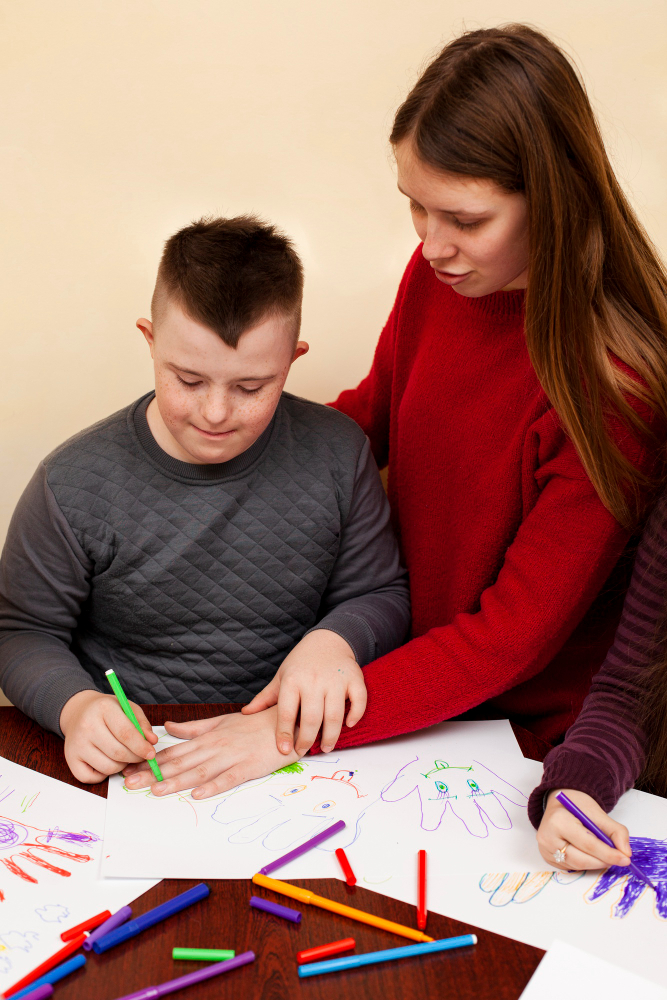Neurodivergent is a term used by people whose brains work differently and might have medical disorders, learning disabilities and be on the autism spectrum. While some of their traits like creativity, extreme intelligence in maths and senses like touch might be more strong than neurotypical people. Now, neurodivergent and neurotypical are not medical terms but alternative terms for differently abled and abled people respectively. These words arose from ‘neurodiversity’ which shows how humans are ‘wired’ differently, especially people with learning or thinking differences. Neurodivergent learners are sometimes medically diagnosed and others are not, which means a class full of students might constitute different kinds of learners, including neurodivergent learners.
Educators must be well aware of the students and their learning behaviour while they teach but sometimes, it’s not possible to be aware of who is a neurodivergent person or has an official diagnosis. Sometimes even neurodivergent learners realise their neurodiversity a lot later in life. Hence, it is important to inculcate a pedagogy where education is inclusive and considerate for all kinds of learners. Teachers can make academic assessments flexible by letting students choose the way they want to be assessed. For example, one would be good at writing and the other would be good at creating art. Hence both will be assessed on the same topic but their submission would be in a different medium. Promoting balance in learning and burning out due to sensory overload must be given importance too. Encouraging learners, being kind and patient while listening to them and helping them lift their self-esteem takes major importance while being an empathetic teacher.

It is quite important for the teacher to understand that everyone learns and processes information at a different pace. Teaching pedagogy must accommodate a range of learning styles so that every student can learn through a style suitable for them. The pedagogy of a Flipped Classroom helps students to learn at their own pace and participate in class discussions to see how much they have understood. The teacher would’ve posted an online lecture or given lecture material to study beforehand, outside the classroom to finish in their own time. Then, students attend class to apply learnt concepts practically and see whether they have grasped them or not. This way, they take home feedback from the teacher and understand and extend their learning. This pedagogy would make a huge difference to slow learners and those with learning disabilities. Another way that neurodivergent learners can be taught is project-based learning or inquiry-based learning, where students pitch in project ideas that interest them and their learning is based on these projects. It helps learners with autism and ADHD to put all their tendency to hyperfocus onto their project and learn from it. Project-based learning can minimise negative traits of ADHD and those tendencies can be leveraged into productive learning which benefits the students and their education.
Teachers need to take the initiative of embracing neurodiversity and recognize the strengths of their students. Rather than separating students based on how they learn or wanting neurodivergent students to conform to ‘normal’ classroom expectations, educators can inculcate unique and creative approaches to teaching everyone. Every student does not learn the same way as the others. In most cases, neurotypical students respond to flipped classrooms or project-based learning better than typical classroom approaches but neurodivergent students don’t always benefit from the typical ones either. Maybe by adapting lessons and creating different pedagogies to meet the needs of neurodivergent learners too, educators can teach all kinds of learners together.
All in all, teaching neurodivergent learners requires a shift in mindset and thinking rather than a strategy to teach them. Offering alternative ways to show they understood concepts through assignments or activities, helping them avoid burnout, accommodating the needs of every student individually and bringing up their confidence are some ways all students can be nurtured, including the ones who might be neurodivergent but lack a formal diagnosis. It helps them understand themselves and supports their well-being while transitioning into adulthood.





























